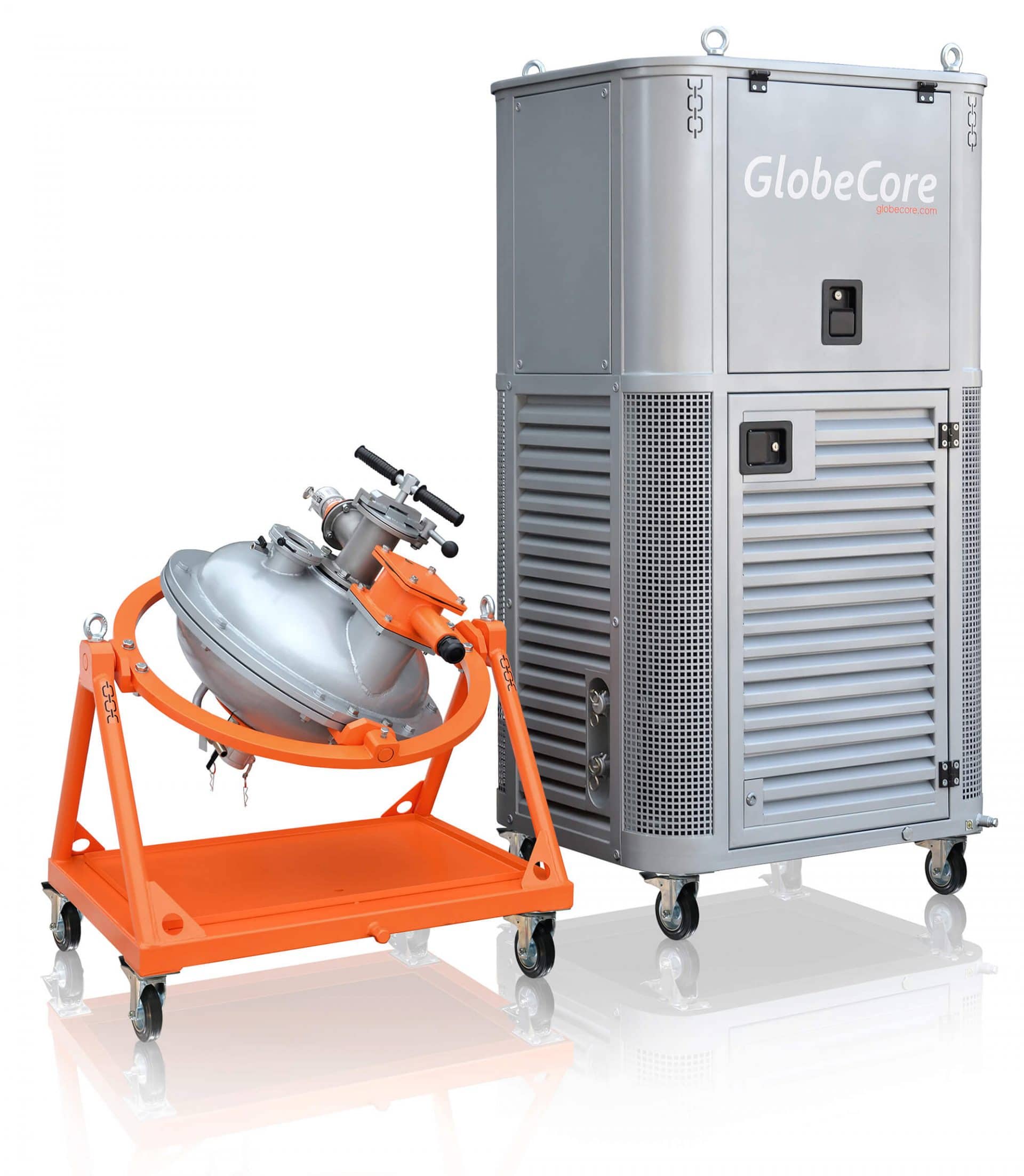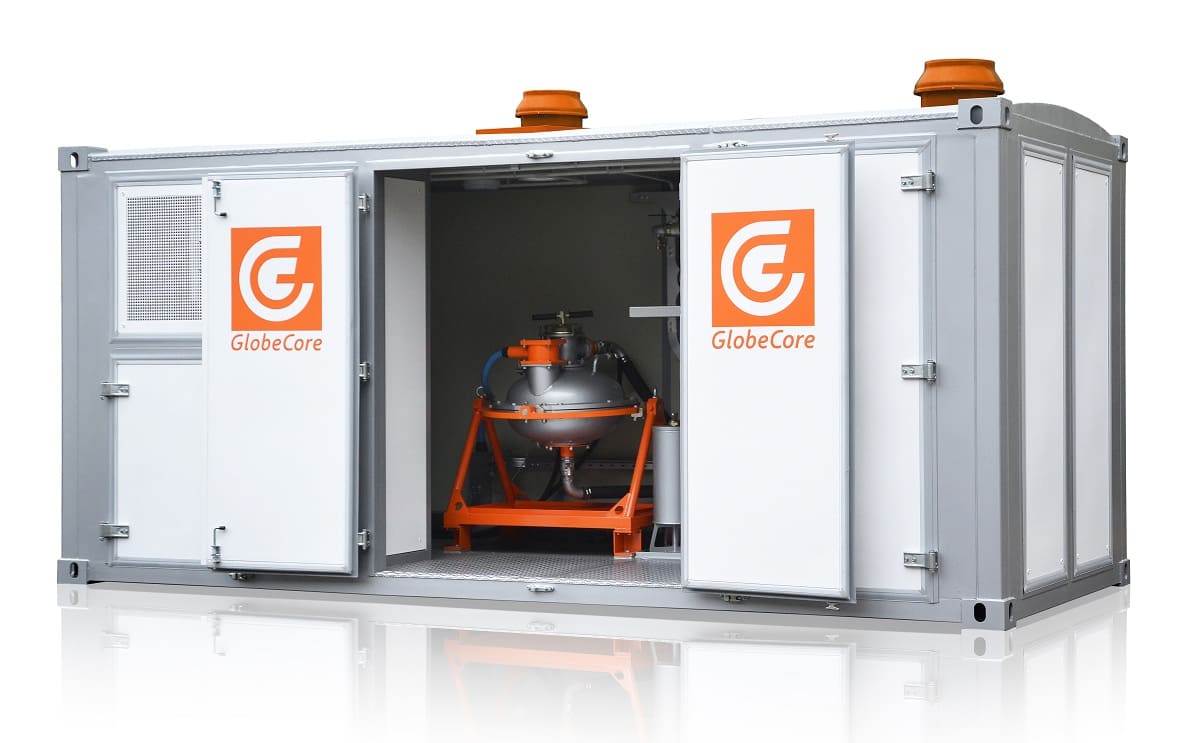Construction materials production is one of the main fields of using a vortex layer device (AVS). The equipment allows obtaining mixes and substances with a high degree of activation which subsequently affects the quality of products. Sand-lime brick production involves the formation of blocks from a lime-sand mix based on quartz sand (92–95%) and lime (5–8%). The main specification of this material is strength. It largely depends on the composition of raw stuff, the ratio of ingredients, the degree of dry mix particle activation, and the dry mix homogeneity.
In this regard, the use of a vortex layer device becomes particularly important in sand-lime brick production. The unit is an efficient disperser and mixer in one. At the outlet, we obtain a homogeneous mix with a high level of particle grinding and activation from which high-quality brick blocks can be prepared.
Requirements to raw stuff for sand-lime brick production
Sand-lime bricks are made of quartz sand and lime. The composition excludes organic and soluble substances. Clay may be contained as minor ingredients (not more than 8–10% of sand mass). It ensures the smoothness of products. Pigment is added to the mix as well. It imparts color to bricks.
In sand-lime brick production, high requirements are imposed on the quality of initial ingredients. They should be pure, free of impurities, highly active, and finely dispersed. In this case, the sand is ground to the size fraction of 2 … 0.2 mm. This allows achieving the maximum density of the material. Furthermore, sand and lime should be activated which allows them to effectively react with each other.
Such properties and characteristics of the material can be ensured through mechanical activation. Processing the raw stuff in dispersers and mixers becomes relevant here. Using them, it is possible to grind the product to the desired size fraction, to activate it, and to mix the ingredients to a homogeneous state.
In general, raw stuff for sand-lime brick production is evaluated according to the main criteria set forth below:
- degree of particle grinding;
- level of ingredients activation;
- homogeneity and purity of mix.
The equipment for grinding and mixing the ingredients is responsible for most of these properties. Therefore, sand-lime brick production is based on the use of mixers and dispersers. They constitute the most important part of a chain within the production line.
Conventional sand-lime brick production design scheme
The classic sand-lime brick production technology includes four stages:
- Mixing the sand, lime, and pigment with water until a homogeneous mass is formed.
- Forming the blocks using a press.
- Baking the blocks in an autoclave.
- Sorting, packing, and stocking the bricks.
Processing the ingredients constitutes a critical stage affecting the product quality. At this point, it is important to achieve high activation of materials so as they would undergo solid-phase reactions. It is also required to stir the mix to a homogeneous state.
The classic sand-lime brick production design scheme involves the use of ball mills. A mix can be processed by abrasion, grinding, breaking, and smashing the ingredients. The materials can be processed separately and then mixed, or subjected to simultaneous grinding and homogenization of the mix. Although the classic technology makes it possible to obtain a high-quality product, it is distinguished by high electricity consumption, time expenditure, and complexity. The equipment is bulky, noisy, wear-prone, and its efficiency reaches just 20%.
The disadvantages of the conventional design scheme can be evaded by using a vortex layer device from GlobeCore. It is a compact, efficient, cost-effective unit designed to process the raw stuff for sand-lime brick production.
Sand-lime brick production technology using a vortex layer device

Sand and lime are fed into a chamber containing ferromagnetic needles which turn into diminutive mixers and crushers when driven by an electromagnetic field. They move intensively through the operating chamber, hit against its walls, collide with one another and with particles of processed material.
At the same time, mixing and dispersion processes driven by high local pressures, electromagnetic fields, acoustic vibrations, and by electrolysis when working with a liquid are observed here. In this medium, substances are intensively mixed and activated forming a high-quality mix.
The processes take from a few seconds to 2–4 minutes to achieve the result. In order to adjust the degree of ingredients activation and grinding, it is sufficient to change the time of processing the materials in the vortex layer.
Efficiency of activating a mix in AVS during sand-lime brick production
While processing the sand in the vortex layer device, it is subjected to a high degree of activation. Plenty of new surface with high contact is formed on the grains due to the presence of active centers, free radicals. At this point, excessive surface energy is formed, and internal energy decreases by contrast. It is caused by cleavage of Si-O siloxane bonds. In this state, the sand undergoes solid-phase reactions faster and more efficiently and has a high structure-forming performance. Sand-lime brick production from such raw stuff allows obtaining a material with high strength factors.
At the same time, lime is amenable to activation as well. Its ability to react with sand also increases which ultimately affects the strength characteristics of the products.
In order to prove the efficiency of lime-sand mix activation in AVS, the appropriate experiment on short-term processing of raw stuff in a vortex layer was carried out in a matter of split seconds. At the same time, grinding of materials was almost not observed, but they were greatly amenable to activation. The mix was passed through AVS, and the properties of obtained brick were analyzed under different processing conditions. The study results are shown in Table 1:
Table 1
|
Lime-sand mix processing parameters |
Ultimate compression strength of brick, σс*10–5, Pa |
|
Without processing |
91.2 |
|
Single spilling through a vortex layer |
239.5 |
|
Double spilling through a vortex layer |
324.5 |
|
Triple spilling through a vortex layer |
328.1 |
We can see that even with short-term processing of raw stuff in the vortex layer environment, it is possible to obtain sand-lime bricks with the strength 3.5 times higher than without using AVS. For the study, we used AVS-100 model of the vortex layer device. This unit is represented in GlobeCore catalog.
Moreover, a high level of lime-sand mix homogenization affects the quality of final product. When exposed to a set of processes in the vortex layer, the ingredients are actively mixed in AVS forming a homogeneous mix. At the same time, they are subjected to additional grinding and activation. And this is one of the most important factors affecting the quality of bricks.
Such processing of lime-ash, lime-silica, and lime-sand mixes is also relevant in sand-lime concrete production, because it results in considerable improvement of mechanical characteristics of the material.
Advantages of sand-lime brick production by means of a vortex layer device
The efficiency of a vortex layer device in sand-lime brick production has been proven in practice. In general, the use of AVS for this field of construction materials production is beneficial and relevant for the following reasons:
- Improved quality of sand-lime bricks
Owing to a high level of particle activation, we obtain a product of high compression strength. The material is distinguished by improved characteristics and wear resistance due to which it is almost not damaged during transportation, onloading, offloading, and ensures the required strength of buildings and structures.
- High efficiency
In just a few seconds of processing the raw stuff, it is possible to achieve a high level of ingredients activation and mix homogeneity. And grinding the ingredients takes literally 2–3 minutes. In the event of conventional technologies, it takes hours.
- Cost-effectiveness
The power requirement of AVS-100 and AVS-150 devices manufactured by GlobeCore is 4.5 and 9.5 kW respectively. The equipment allows reducing the electricity consumption of production line several times. Furthermore, it reduces the time of processing the material which is also advantageous in terms of resource saving.
- Ease of use
The unit can be integrated into the existing sand-lime brick production line without difficulty. It requires no pedestals and additional structures for installation. It is distinguished by compactness and easy to move through the workshop.
A vortex layer device is suitable for both a large-scale sand-lime brick production enterprise and a comparatively small workshop. It allows increasing the factory efficiency, improving the quality of products, and optimizing the production process. For ordering AVS device or getting advice, please contact GlobeCore sales representatives.


 AVS-100 Mixing Machine. ...
AVS-100 Mixing Machine. ... AVS-150 Chemical Mixing ...
AVS-150 Chemical Mixing ... AVSk-150 Wastewater Treatment ...
AVSk-150 Wastewater Treatment ...